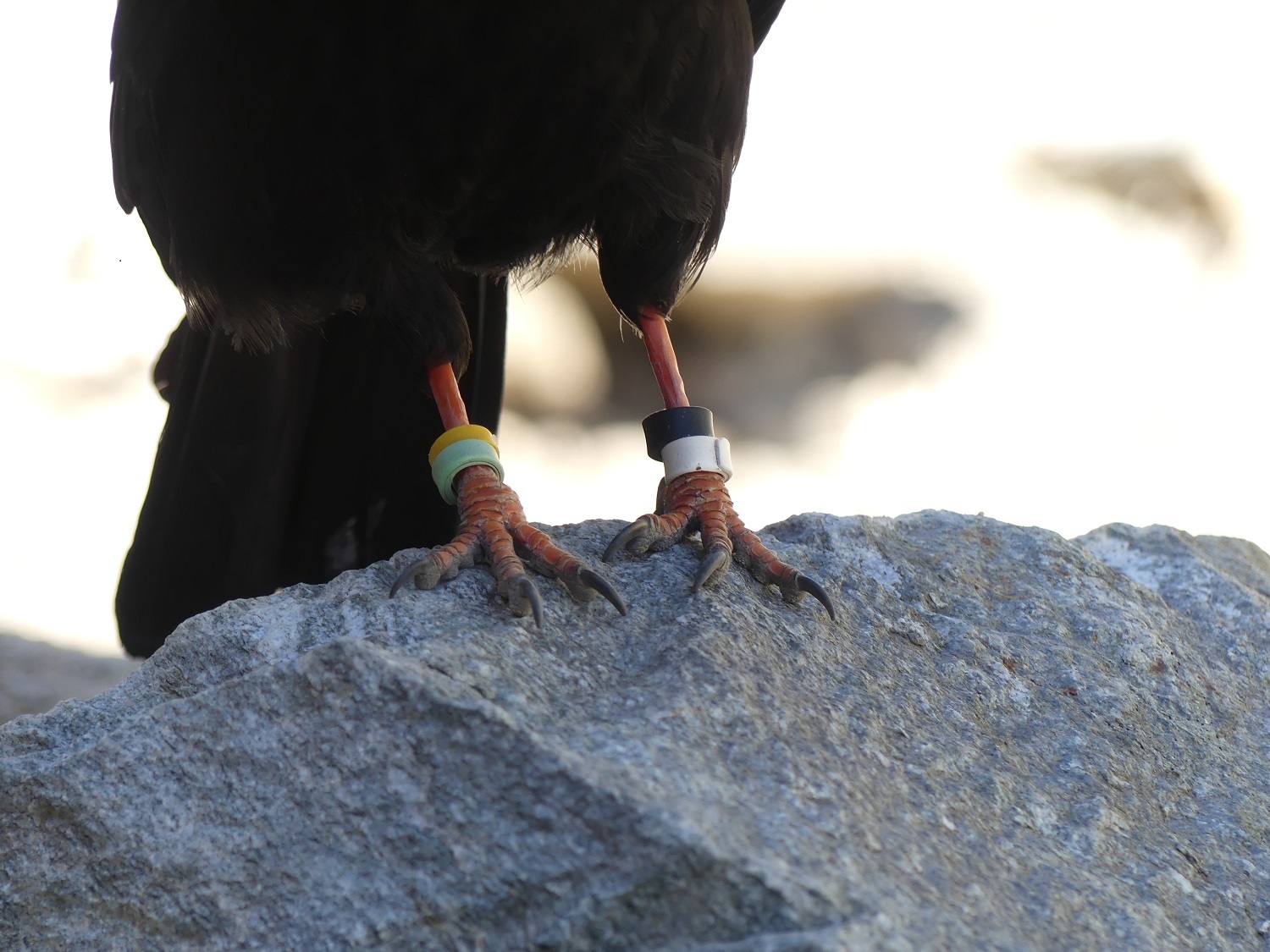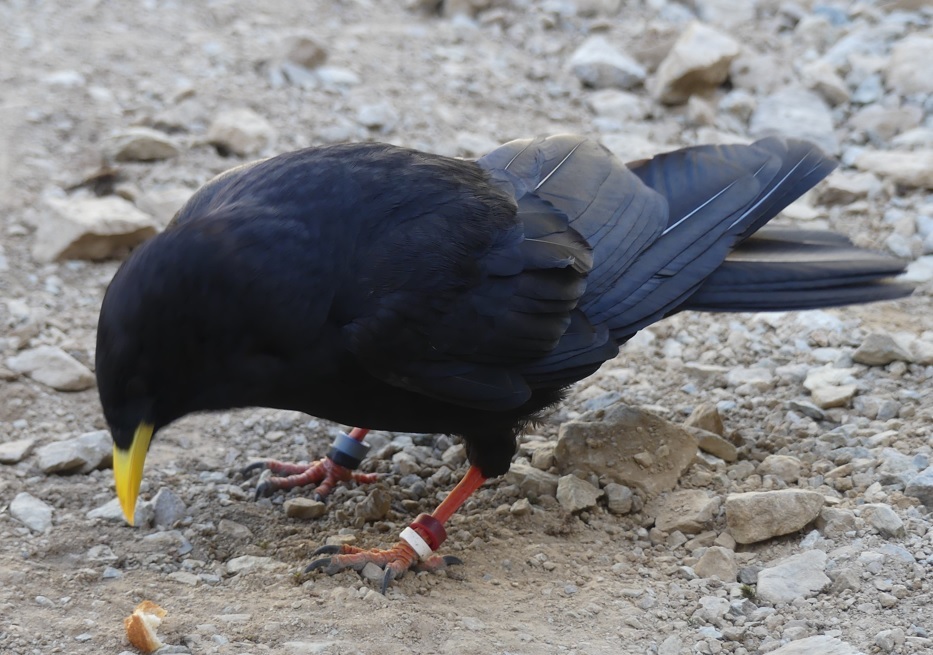Spot the Mont Blanc ringed choughs
The yellow-billed chough is an emblematic bird of the mountains, often confused with its cousin, the jackdaw, which lives on the plains. The chough, on the other hand, is a year-round resident of the highlands. A very good flyer, it makes extensive daily trips between the high cliffs where it nests under cover and the open areas (grassland, moorland) where it looks for food. A social species par excellence, the chough always exploits its territory in groups of dozens of individuals. In winter, gatherings of several hundred individuals occur during the day at low altitudes. It is opportunistic, taking advantage of human resources linked to tourism and agricultural activities. The oldest of the Mont Blanc (ringed) choughs is 21 years old, an impressive age when you consider that it lives in extreme climates. The most adventurous Chamonix chough left to settle in Switzerland in the Bernese Alps (~130 km).
Anne Delestrade, a researcher at CREA Mont-Blanc, is monitoring the evolution of chough populations and their movements in the Mont-Blanc massif. The scientific questions are: How do the choughs exploit the territory according to the seasons? What is the impact of human use on their movements? What is the impact of environmental changes linked to climate change on their movements and survival?
Since the end of the 1980s, almost 2000 choughs have been marked with four small coloured rings on their legs. The colour combinations used are unique, which makes them individually recognisable. Each time one of them is subsequently located (by taking a photo), this provides important information for this study.
Target audience
Region
Implementation time
2 min to enter your observation
Naturalist difficulty
- Naturalist
- Novice
Involvement
every observation, even occasional, counts
Species concerned
Access to study site
Equipment
camera, a smartphone or GPS (location)
The protocol
1 Locate & photograph
When you see a ringed chough during one of your walks, take a picture of it so that the colour of the four rings on its legs can be clearly distinguished (see some examples below). Please remember to also record the GPS coordinates of your location so that you can associate it with your observation later.
2 Send
To give us your observation, send us a email at spot@creamontblanc with the location and the picture you took. Your observation will then be submitted to Anne Delestrade, a researcher specialising in yellow-billed choughs, for identification of the individual. You will be notified as soon as the identification is completed. You can then receive the bird's identity card in return (example: White Orange Red Green is a female ringed at Lac Blanc in August 2009 just after fledging from the nest. She therefore celebrated her tenth birthday in the summer of 2019).
Practical advice
To find out the name of the bird, read the ring colours starting with the right leg of the bird and the top ring: right leg high; right leg low; left leg high; left leg low.
Toolbox
Examples :







